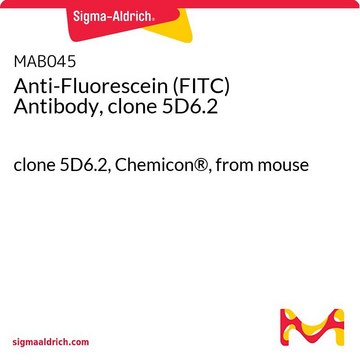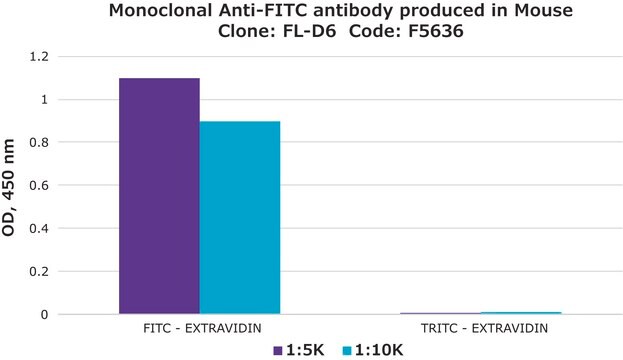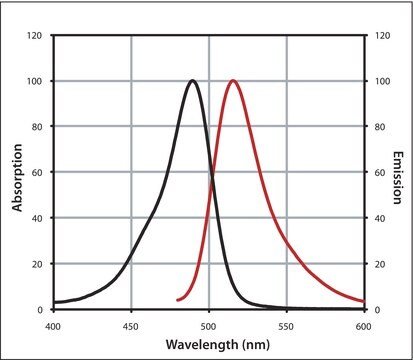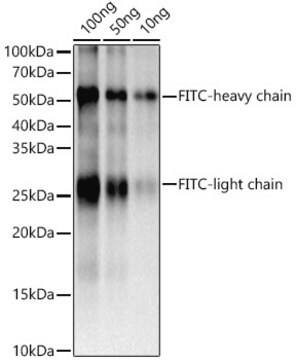SAB4200738
Anti-FITC antibody, Mouse monoclonal
clone FL-D6, purified from hybridoma cell culture
Sinónimos:
Anti-Fluorescein isothiocyanate
About This Item
Productos recomendados
origen biológico
mouse
Nivel de calidad
forma del anticuerpo
purified from hybridoma cell culture
tipo de anticuerpo
primary antibodies
clon
FL-D6, monoclonal
formulario
buffered aqueous solution
concentración
~1.0 mg/mL
técnicas
immunoblotting: 1.25-2.5 μg/mL using ExtrAvidin-FITC
immunohistochemistry: suitable
indirect ELISA: 0.15-0.3 μg/mL using 5 μg/ml ExtrAvidin-FITC
isotipo
IgG1
Condiciones de envío
dry ice
temp. de almacenamiento
−20°C
modificación del objetivo postraduccional
unmodified
Descripción general
FITC (fluorescein isothiocyanate) is a fluorochrome dye that absorbs ultraviolet or blue light (with peak wavelength of approximately 495 nm) causing molecules to become excited and emit a visible yellow-green light (with peak wavelength of approximately 519 nm).
Especificidad
Inmunógeno
Aplicación
- immunoblotting
- enzyme-linked immunosorbent assay (ELISA)
- immunohistochemistry
Acciones bioquímicas o fisiológicas
Forma física
Almacenamiento y estabilidad
Cláusula de descargo de responsabilidad
¿No encuentra el producto adecuado?
Pruebe nuestro Herramienta de selección de productos.
Código de clase de almacenamiento
10 - Combustible liquids
Punto de inflamabilidad (°F)
Not applicable
Punto de inflamabilidad (°C)
Not applicable
Certificados de análisis (COA)
Busque Certificados de análisis (COA) introduciendo el número de lote del producto. Los números de lote se encuentran en la etiqueta del producto después de las palabras «Lot» o «Batch»
¿Ya tiene este producto?
Encuentre la documentación para los productos que ha comprado recientemente en la Biblioteca de documentos.
Nuestro equipo de científicos tiene experiencia en todas las áreas de investigación: Ciencias de la vida, Ciencia de los materiales, Síntesis química, Cromatografía, Analítica y muchas otras.
Póngase en contacto con el Servicio técnico








